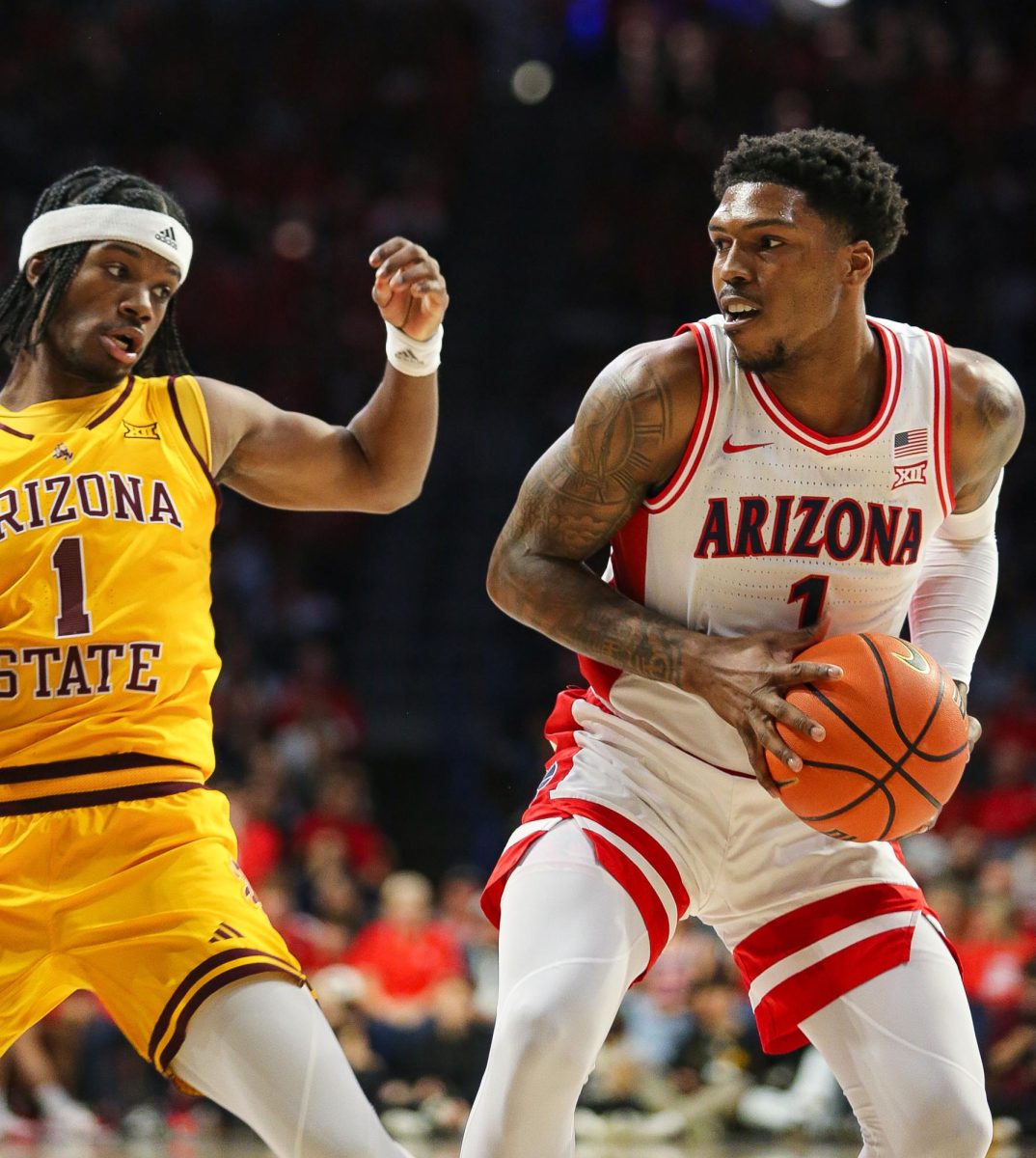If you want to talk about movies, Roger Ebert would be a good guy to talk to. If you want to talk about turning food into hilarious stand-up comedy material, hit up Jim Gaffigan. If you want to rekindle the magic of “”Arrested Development,”” look at the top of the page for my address and email me, we’ll talk.
But if you want to talk football, whether it’s about the Arizona Wildcats or the X’s and O’s of the game, Garrett Chachere is your guy. I caught up with the Wildcats’ inside receivers coach after practice to pick his brain about the state of the receivers at Arizona and what exactly it takes to be a receiver in college.
Q: How are the inside receivers looking this year?
A: “”Things are great. We’re working hard, competing, and contributing. I’m really pleased with them.””
Q: You guys entered 2009 with a bunch of unknowns, but 2010 features a few marquee guys. What do you expect from them this year compared to last year?
A: “”I expect consistency, and I expect a high level of play, and they know that. Dave Roberts and (William) Bug Wright expect high level of play, and their backups expect high level of play too. I use the term backups, but everybody is going to play. You can’t stay fresh for a whole season with the same guys playing.””
Q: How does David Douglas’ move to outside receiver effect the inside receivers?
A: “”I wish he would come back. We miss David, he was a big part of our group last year because of all the things we talk about with buying into the mindset of football, but I think he’ll stay out there. I feel like David is versatile enough to play out there and thought it would be a seamless transition. He still comes and hangs out with us, we haven’t kicked him out of the family. He’s just on vacation for a little while. But I feel good about the guys we have. We have Richard Morrison, who’s made a great transition from quarterback, behind Bug Wright, and we have Terrence Miller, who played a little bit last year as a true freshman behind David Roberts.””
Q: What’s the difference between an inside receiver and an outside receiver?
A: “”The position that we play, compared to the outside, is different because we have to block linebackers and safeties on run plays, and we have to block at the point of attack. When we catch the ball, we have to be ready to get hit by a safety and it’s a little different getting hit by guys that weigh 225 lbs. as opposed to a cornerback.””
Q: Inside receivers, typically, are the smallest guys on the field. How important is the mental aspect of blocking bigger guys?
A: “”Very much so. You have to develop toughness and have pride. We started last year and instilled that pride, and they’ve really embraced that – that football is a game of tackling and blocking and that they’re tougher than other receivers. The guys that they’re blocking might be bigger than them, but we’re tougher than them and we’re going to scrap with them and we’re going to fight them. It’s a brawl.””
Q: What’s the difference, mentally, between blocking a bigger guy, like a linebacker or safety, and blocking a smaller guy like a cornerback?
A: “”When we block a corner we feel like we should win. When we block a linebacker or a safety, the idea is that, at the end of a 15 round fight, we’ve won about 10-12 rounds. We’re going to lose some, and they’re going to knock us on our butt, but that’s part of the business of what we do. I won’t get mad if we get knocked on our butt, because it’s going to happen. What will make me mad is if we avoid making the block and don’t attack.””
Q: What’s the difference, physically, between blocking a bigger guy, like a linebacker or safety, and stalk blocking a smaller guy like a cornerback?
A: “”The bigger guys try to run you over so it’s more about driving and being at the point of — being at the point of attack you have to engage right away and be physical at the point of attack. When those linebackers get mad and they get down and they cheapshot you, you’re getting to them and you’re working them. It’s about outworking them once the contact is made. A stalk block is more of a positioning block since the plays might take a while (to get to the outside) so you can’t engage right away, you need to shield them with your body. Smaller guys generally stay outside for contain and try to beat you with their athleticism by going around you.””
Q: It’s third-and-three in a tight game and you call a run to the outside, what inside receiver do you want making that key block on the edge?
A: “”I know it sounds politically correct, but I wouldn’t have a problem with any of them, and that’s why I’m happy coaching them. During practice I put all of them in those positions because the guy that I might want to make that block could get hurt in the first quarter, and that third-and-three might happen in the fourth quarter and somebody has to do it.””
Q: In a nutshell, give me the job description of an inside receiver.
A: “”Our job is to get first downs by making catches and to get first downs by making blocks on run plays.””














